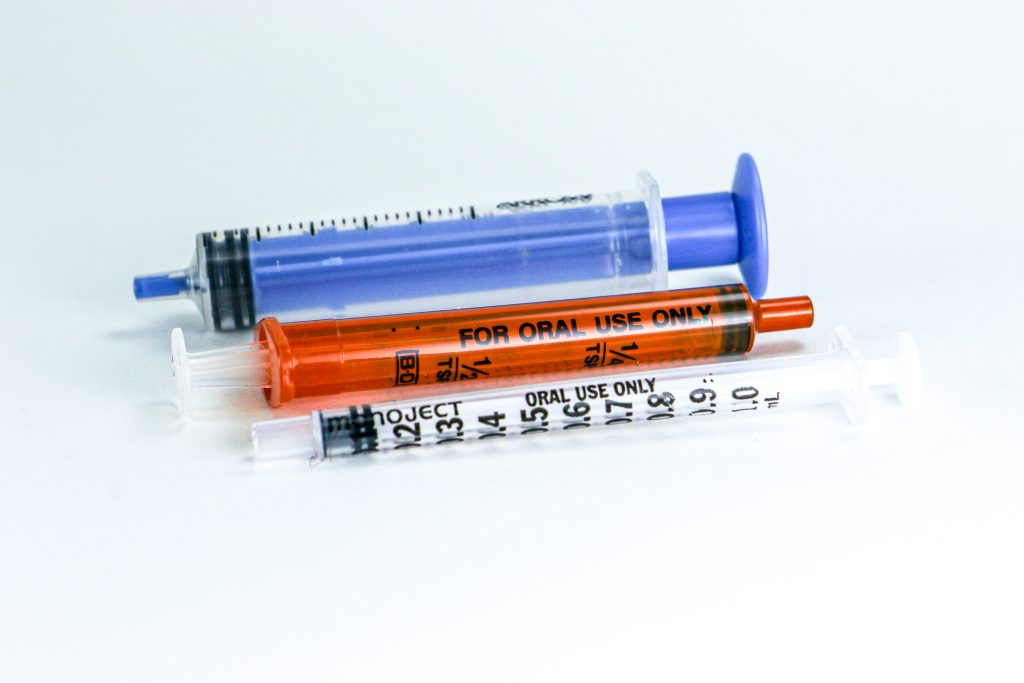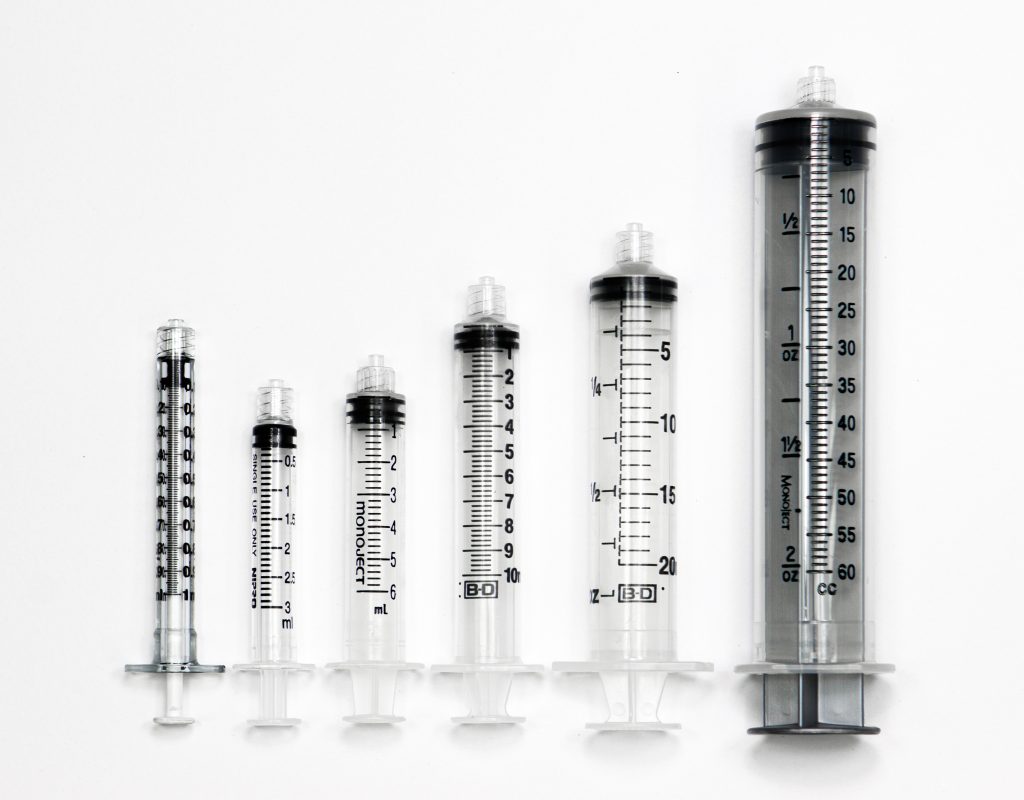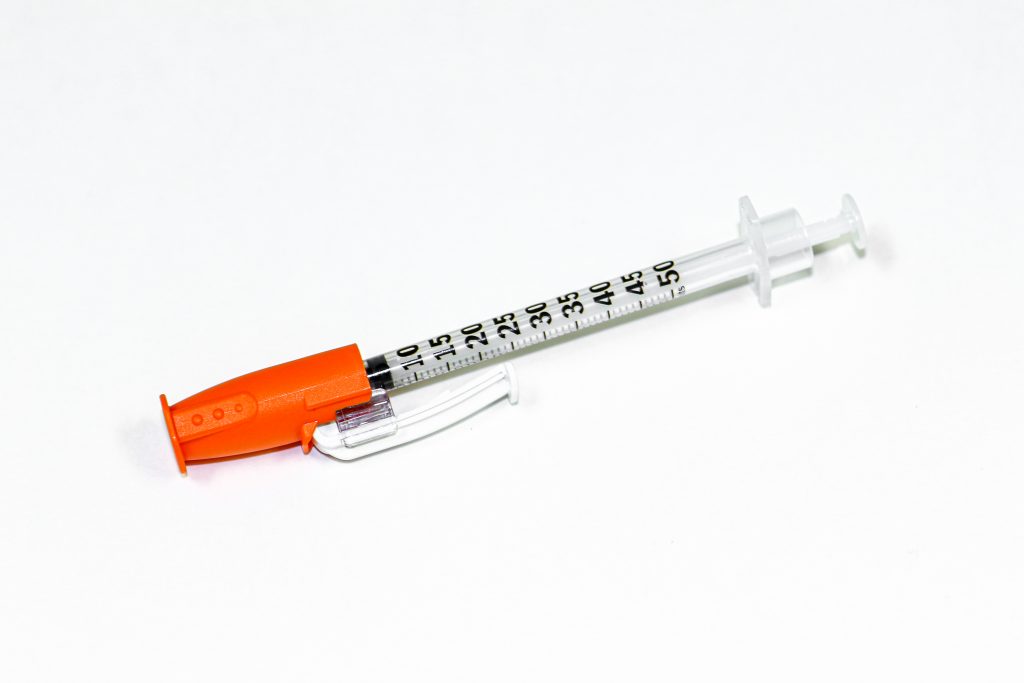5.2: Conceptos básicos de matemáticas
( \newcommand{\kernel}{\mathrm{null}\,}\)
Aparatos de medición
Dependiendo del tipo y cantidad de medicamento que se esté administrando, existen varios dispositivos que se utilizan para medir y administrar medicamentos.
Un vaso para medicamentos que está compuesto de plástico o papel se usa para contener y dispensar medicamentos orales a un paciente. Un vaso de papel se usa para administrar medicamentos no líquidos, como tabletas o cápsulas. Un vaso de plástico para medicamentos se usa para dispensar medicamentos líquidos y no líquidos, y también se usan vasos calibrados para medir medicamentos líquidos antes de la administración. Los vasos de medicamentos calibrados tienen medidas etiquetadas como onzas (oz), centímetros cúbicos (cc), mililitros (mL), cucharaditas (cucharadita) y cucharadas (Tbs). Ver Figura5.2.1 [1] para una imagen de una taza de medicamento calibrada.

Las jeringas orales se utilizan para administrar medicamentos líquidos por vía oral, especialmente a los niños, ya que permiten la medición precisa de pequeñas dosis. Ver Figura5.2.2 [2] para una imagen de una jeringa oral. Las jeringas orales tienen puntas diferentes a las jeringas utilizadas para las inyecciones.

Las jeringas se utilizan cuando se administran medicamentos por vía parenteral (es decir, intradérmicamente, subcutáneamente, intramuscularmente o intravenosamente). Las jeringas utilizadas para inyecciones están disponibles en muchos tamaños y son seleccionadas por la enfermera en función del tipo de inyección y el tipo de medicamento administrado. Los tamaños comunes de las jeringas varían de 1 mL a 60 mL. Ver Figura5.2.3 [3] para una imagen comparando varios tamaños de jeringas. Las jeringas se calibran en función del volumen que contienen. Por ejemplo, una jeringa de 1 mL se calibra en centésimas y una jeringa de 3 mL se calibra en décimas. Las jeringas que contienen volúmenes más grandes, como las jeringas de 5, 10 y 12 ml, generalmente se calibran en quintas (dos décimas). Las jeringas grandes, como las jeringas de 60 ml, se calibran en números enteros.

Se utilizan jeringas especiales para administrar insulina y se calibran en unidades. Ver Figura5.2.4 [4] para una imagen de una jeringa de insulina. Las jeringas de insulina se identifican fácilmente mediante una tapa naranja estándar.

- “Tazas de medicamentos” de Deanna Hoyord, Chippewa Valley Technical College está licenciado bajo CC BY 4.0
- “Jeringas orales 3I3A0820.jpg" por Deanna Hoyord, Chippewa Valley Technical College está licenciado bajo CC BY 4.0
- “Jeringas 3I3A0446.jpg" por Deanna Hoyord, Chippewa Valley Technical College está licenciado bajo CC BY 4.0
- “Insulin Syringe 3I3A0783.jpg" por Deanna Hoyord, Chippewa Valley Technical College está licenciado bajo CC BY 4.0


